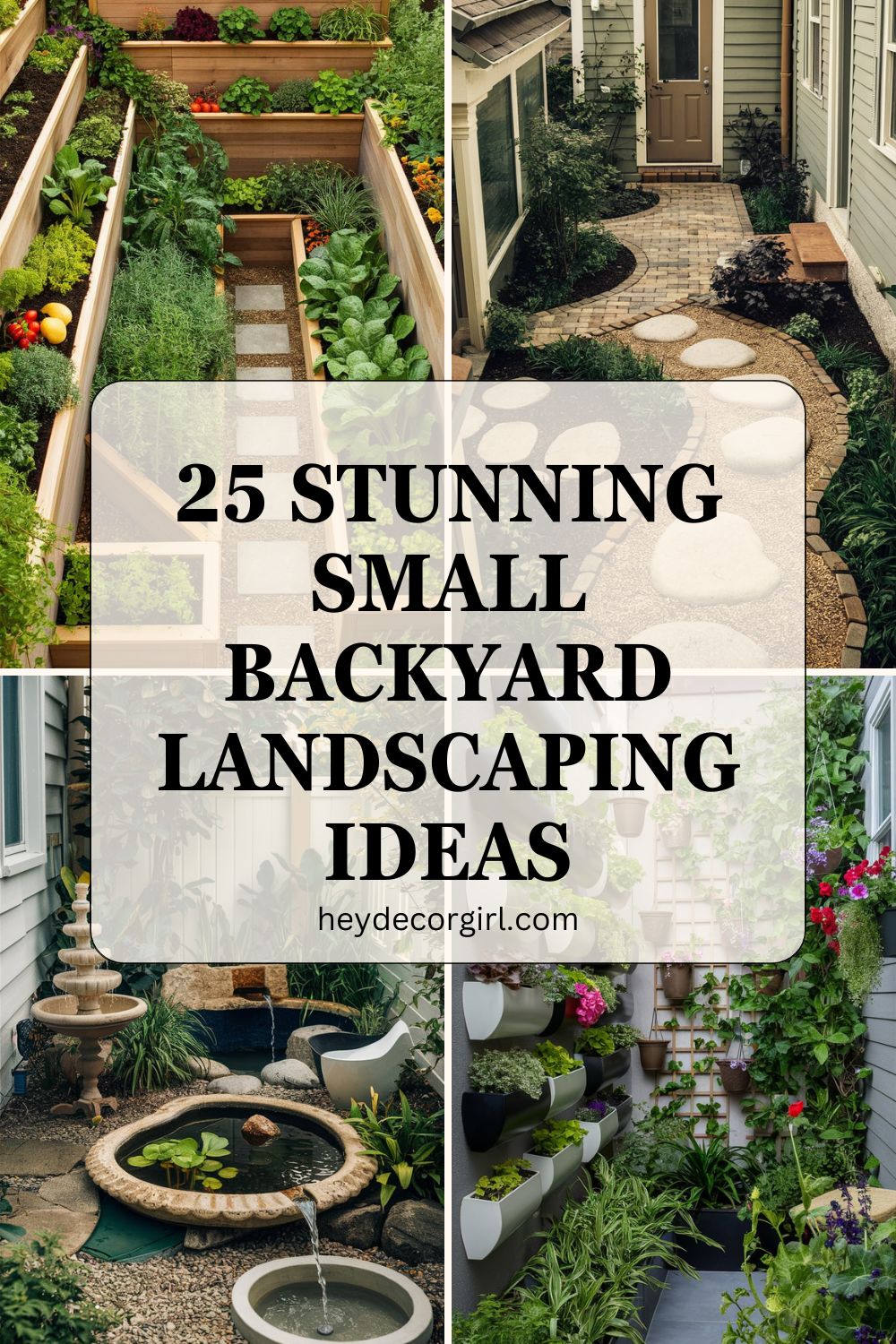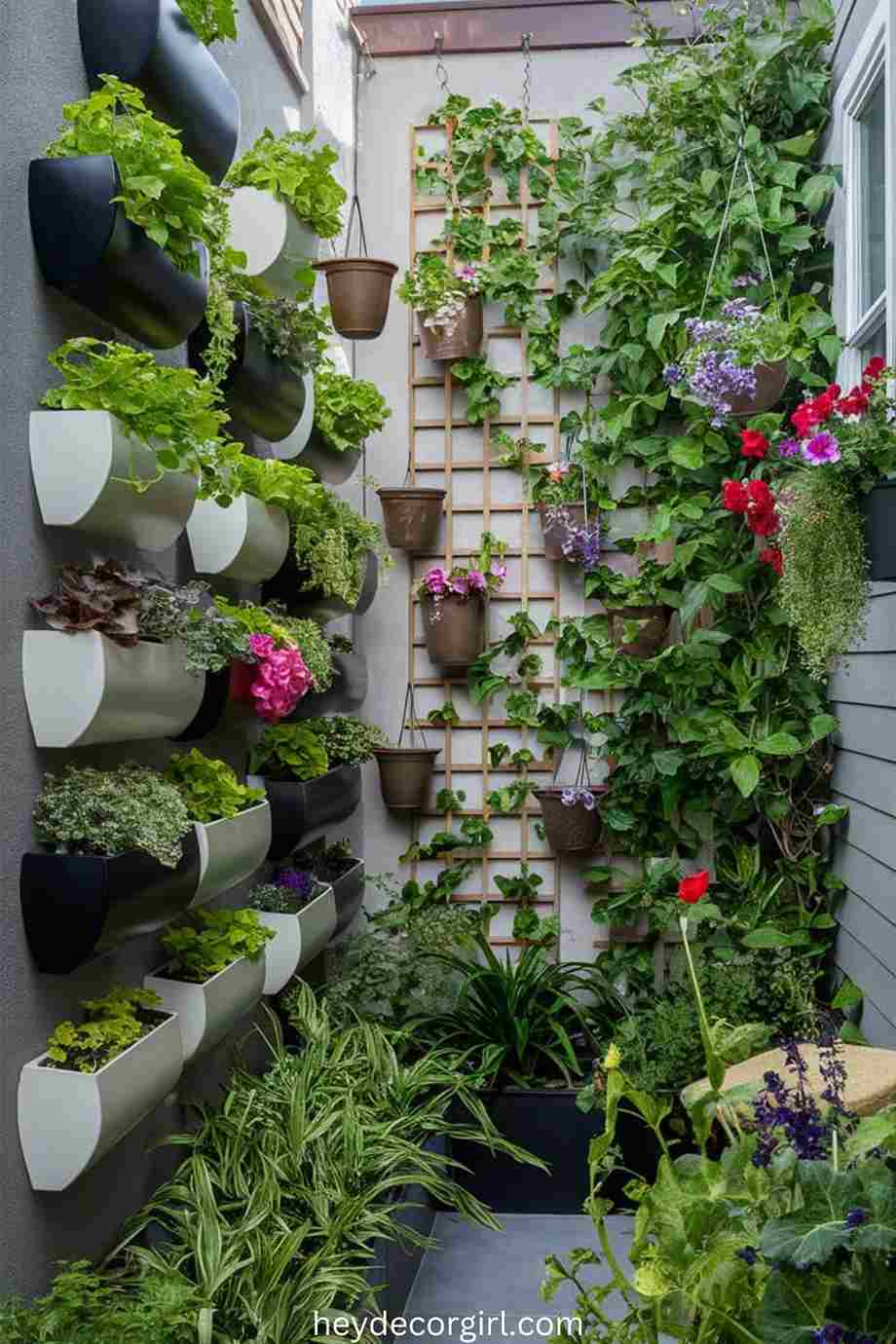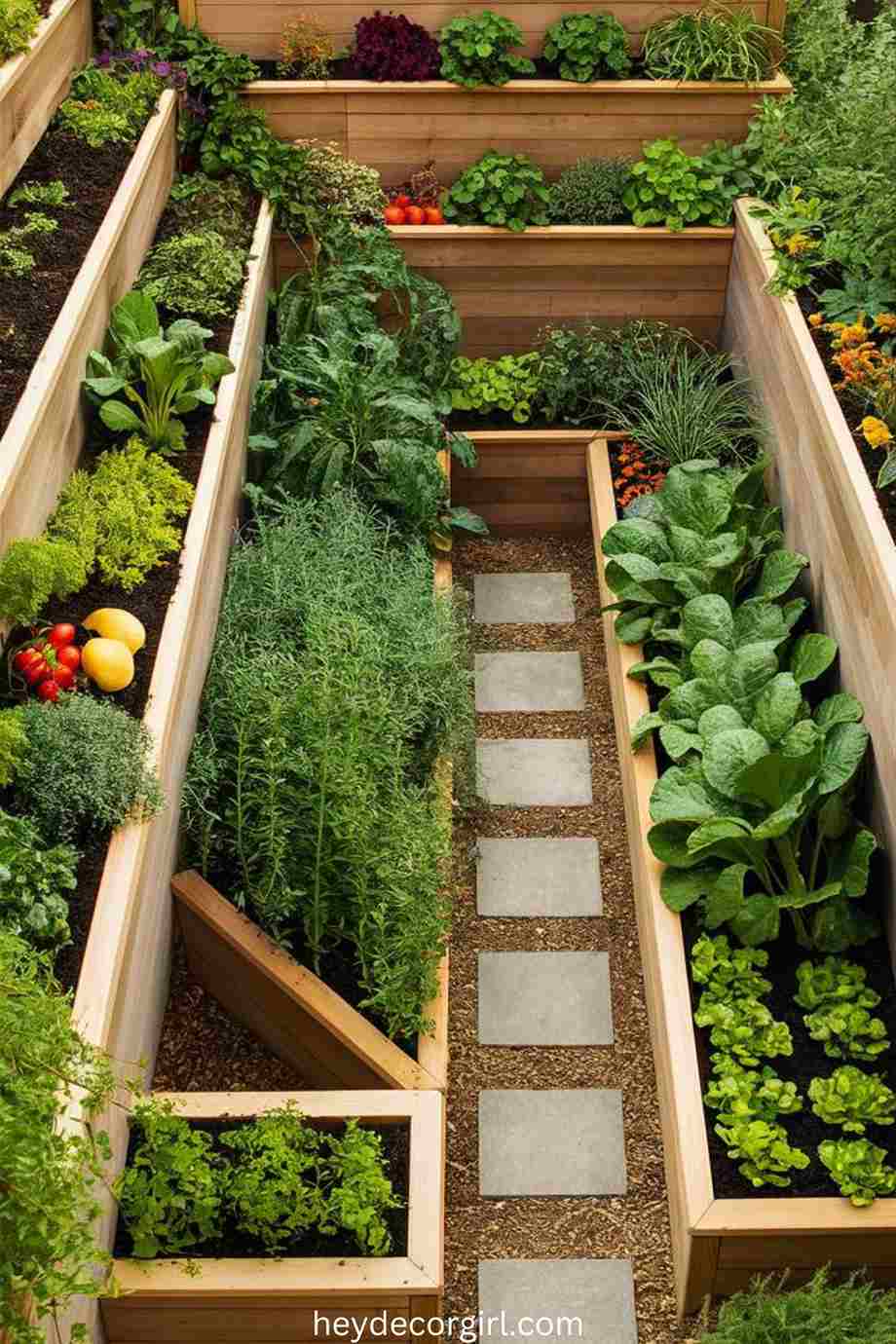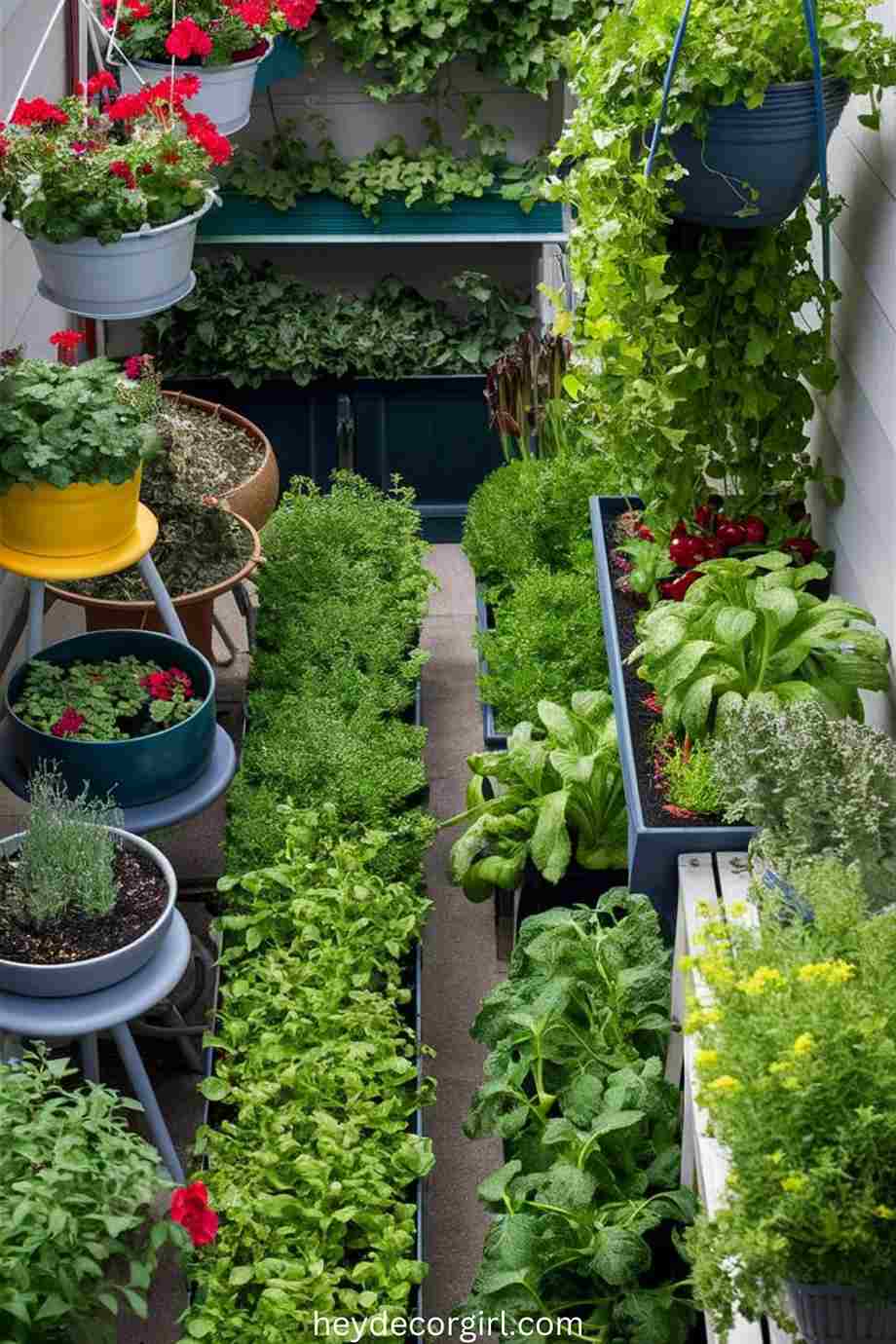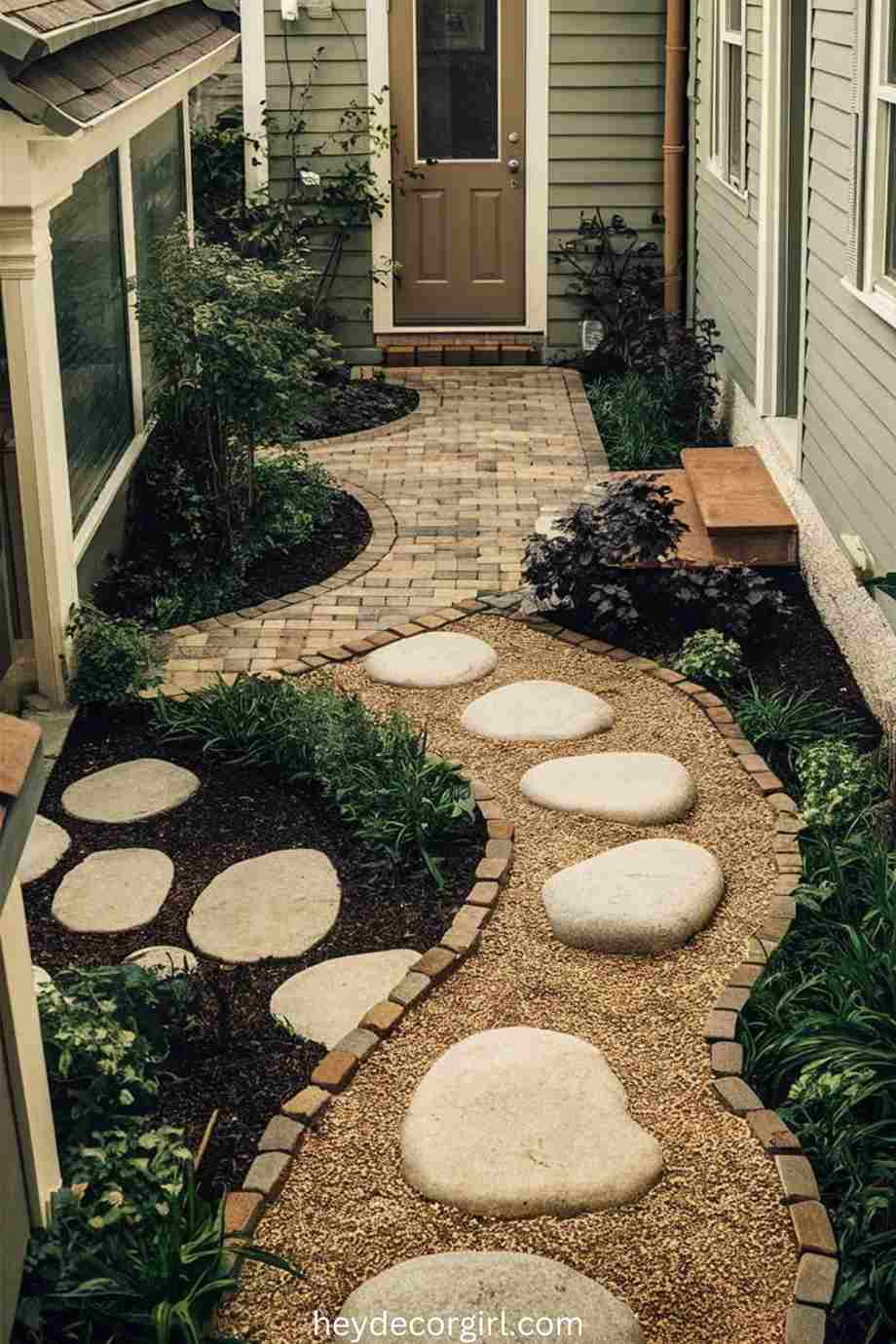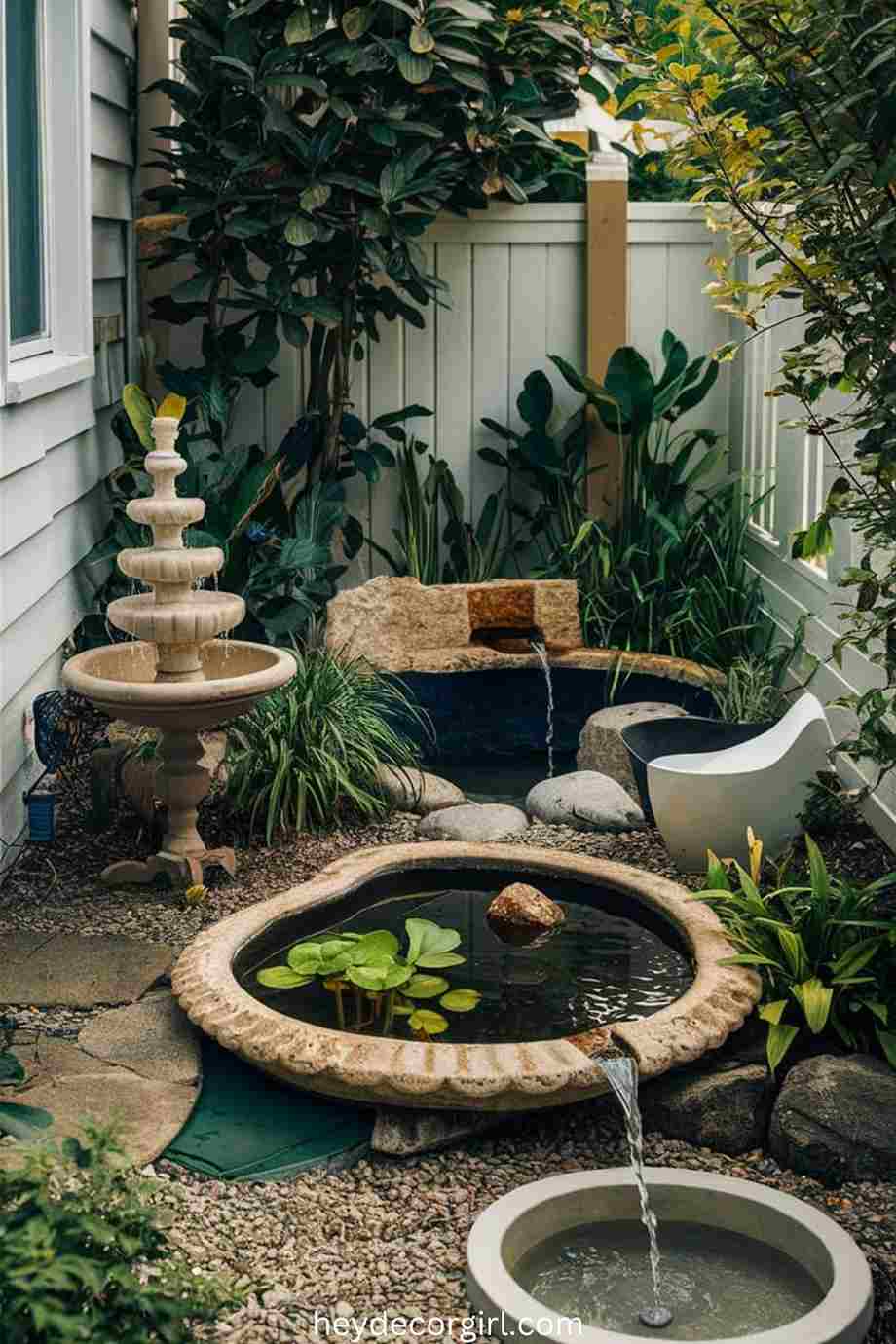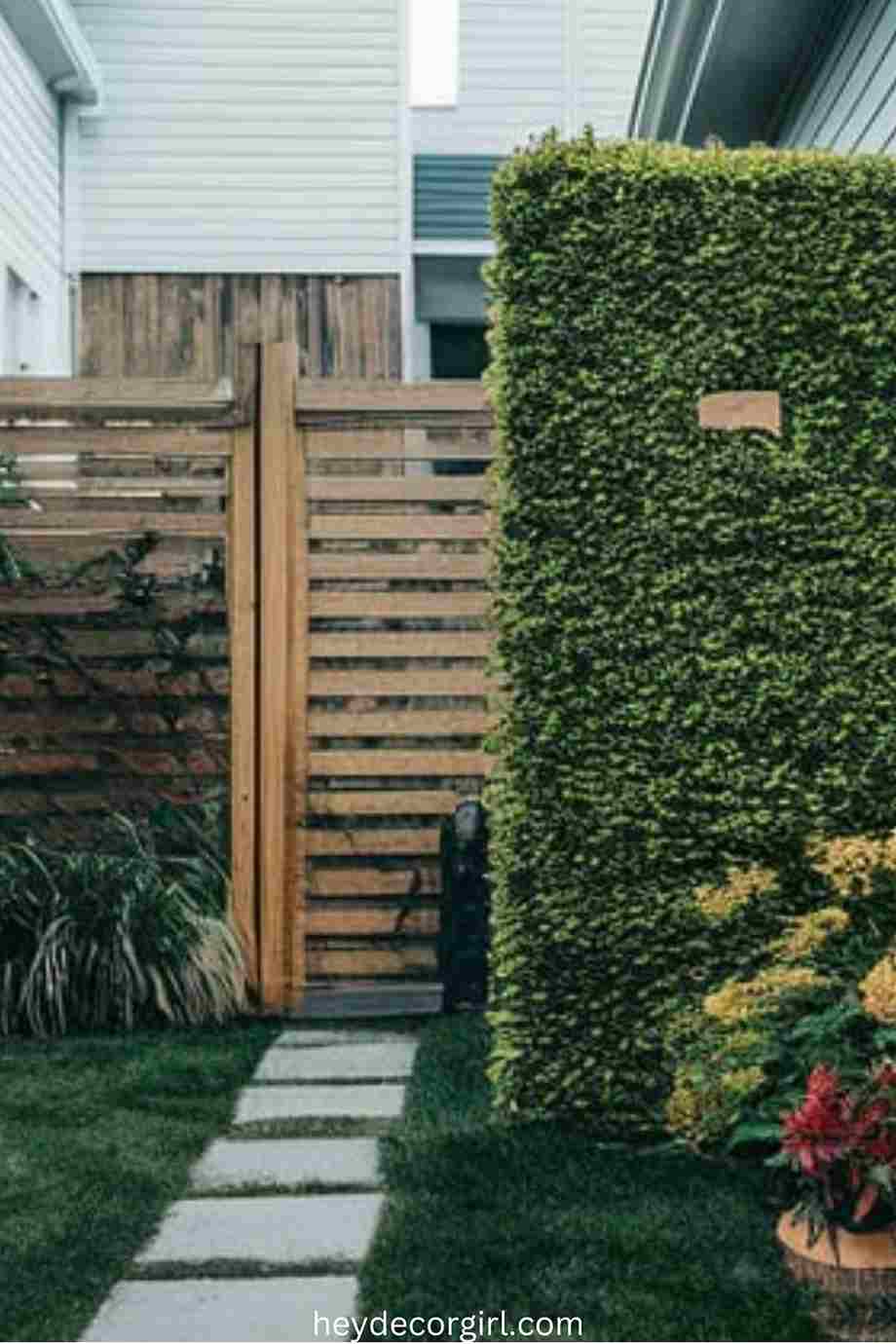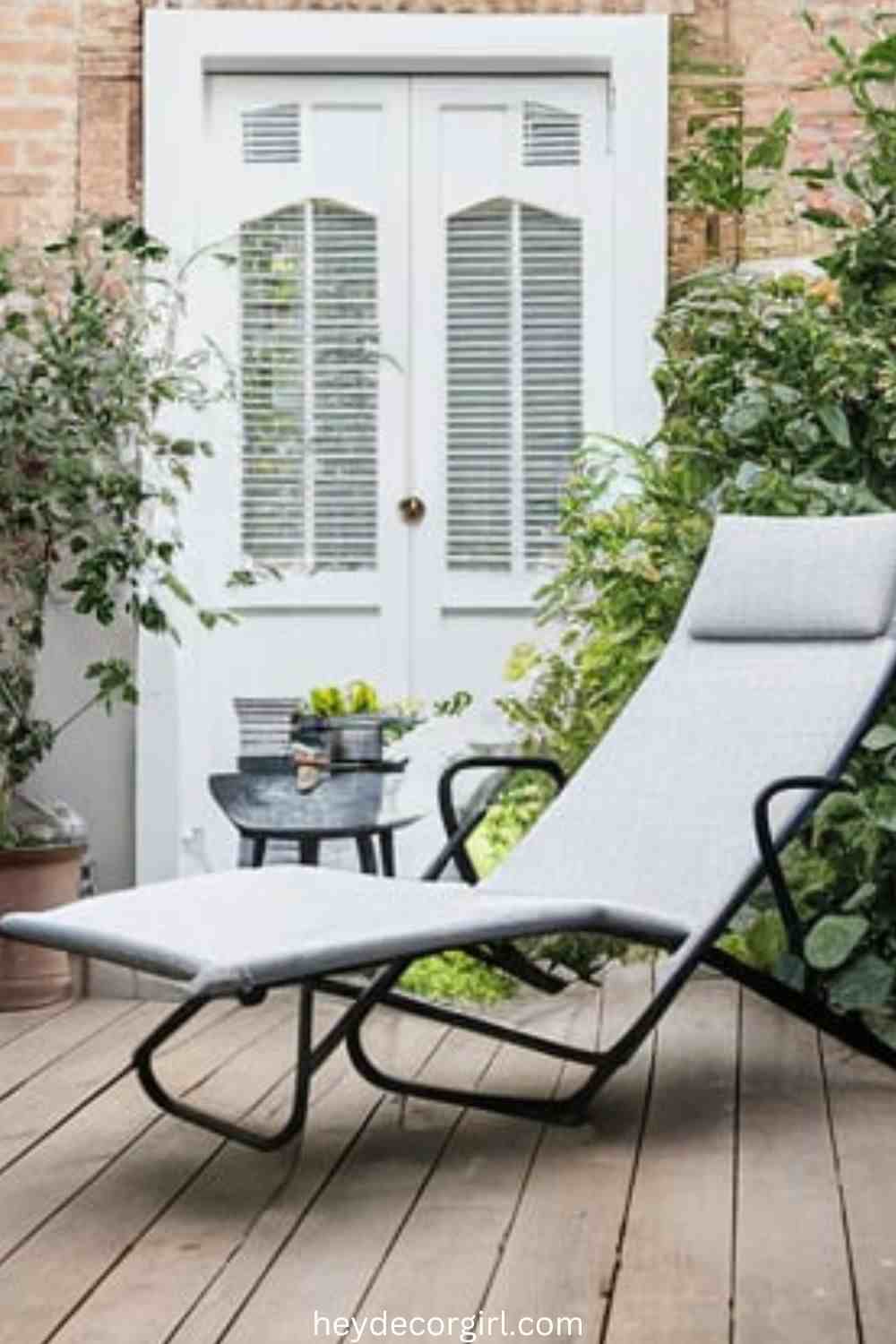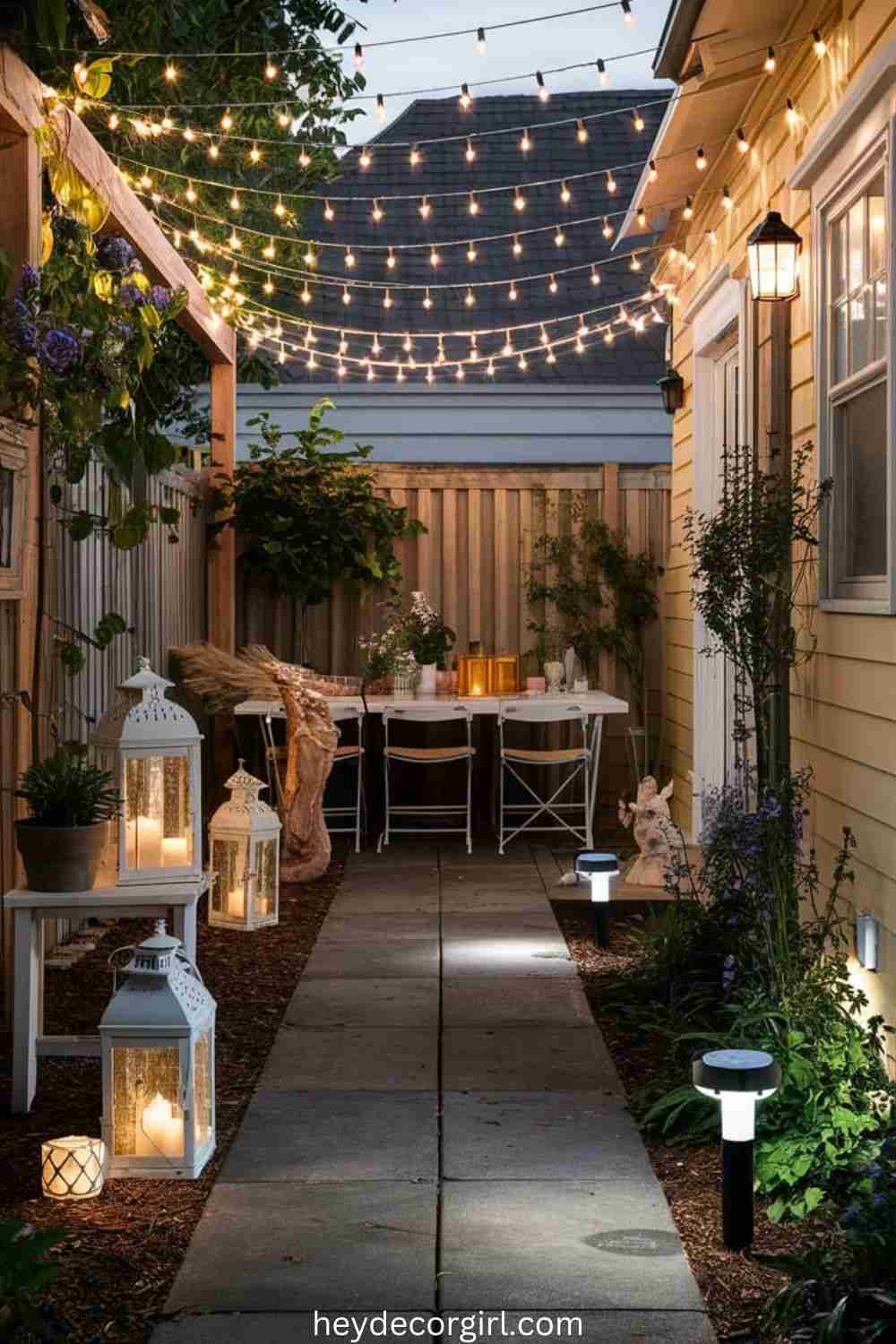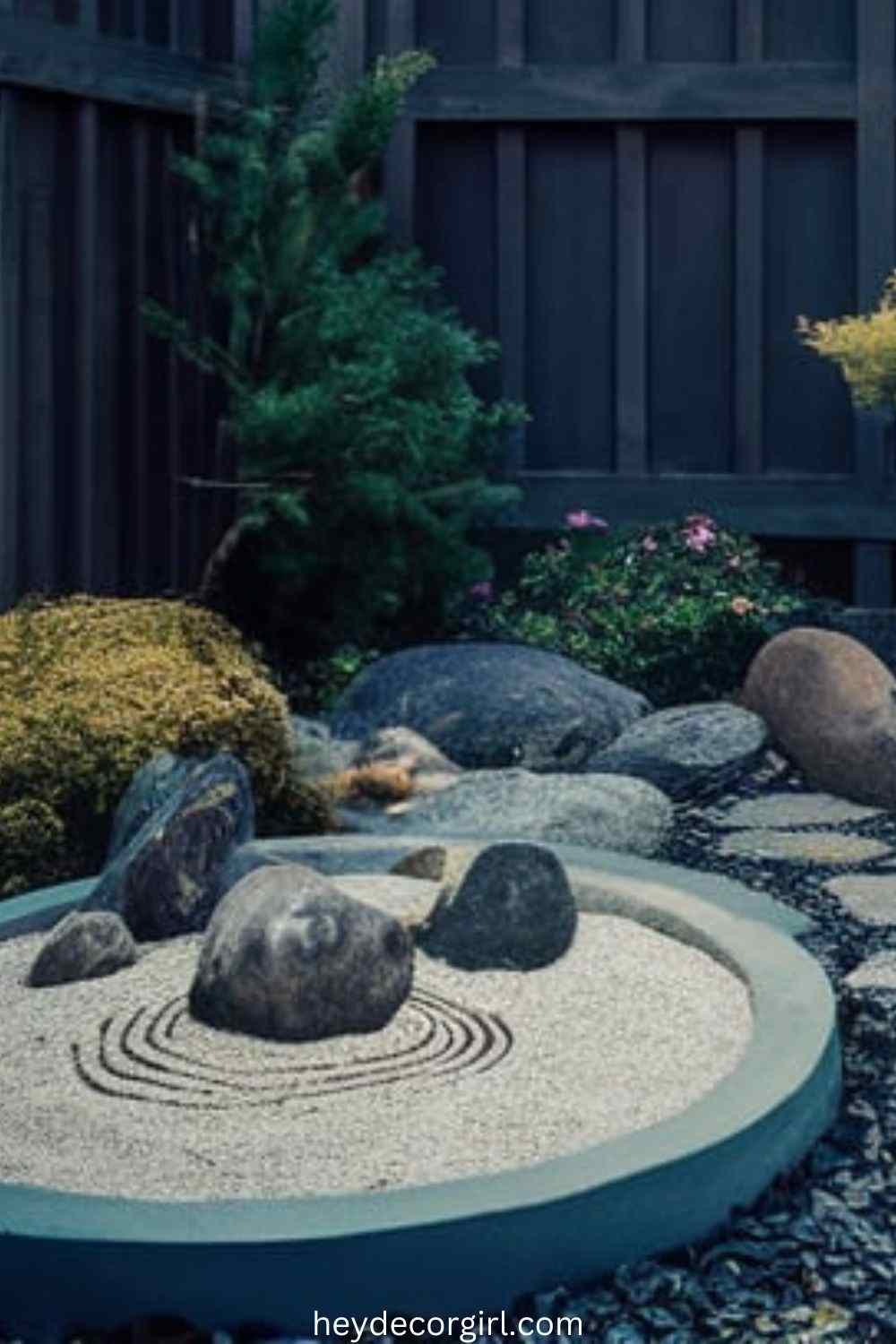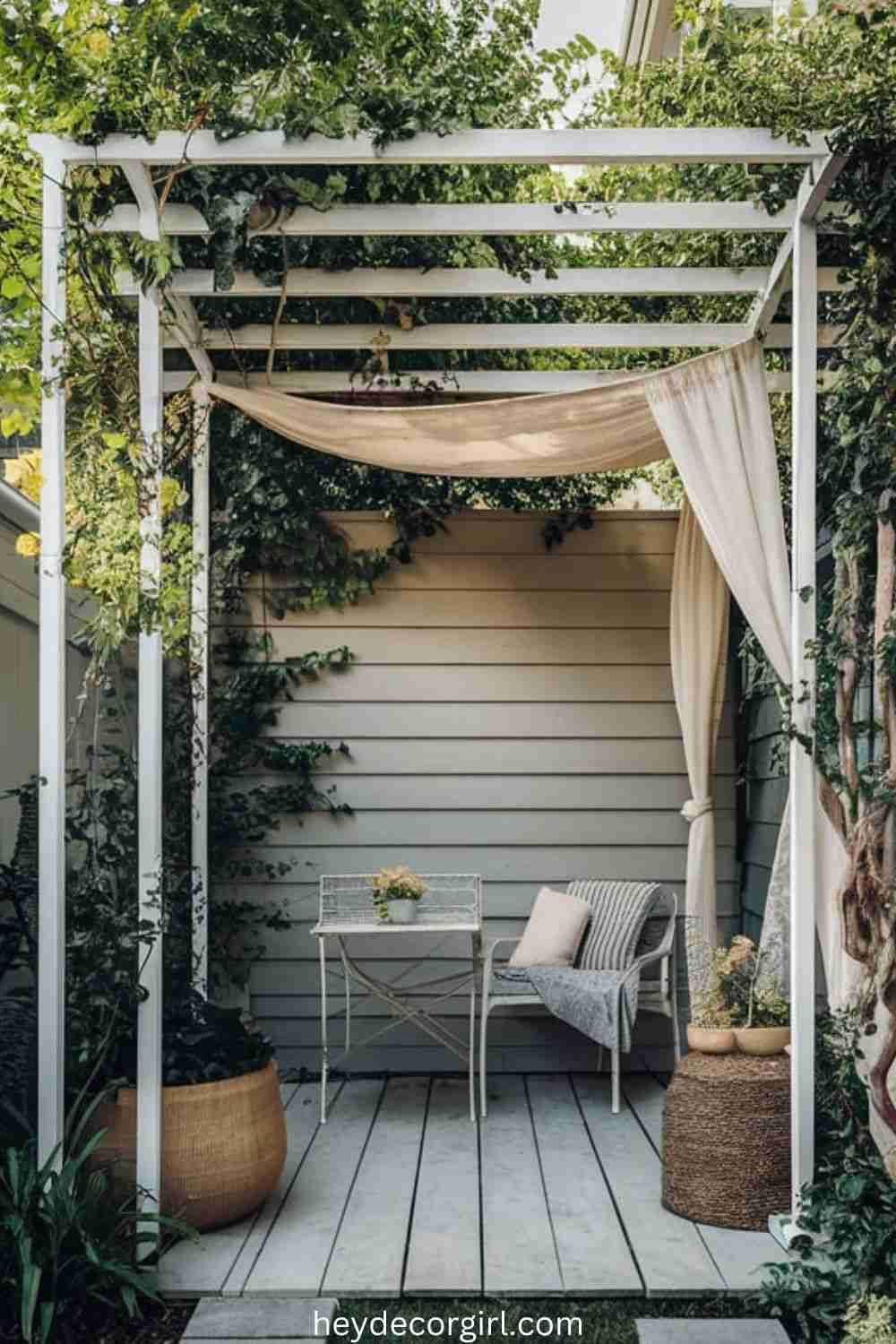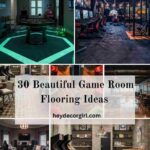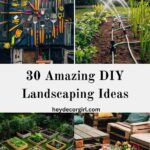Small Backyard Landscaping Ideas is all about transforming a limited outdoor space into a beautiful and functional area that maximizes every inch. Whether you’re working with a tiny patio or a compact yard, creative landscaping can turn your small space into a charming retreat. Optimizing space is crucial in small backyard designs, as it ensures you make the most out of every square foot while maintaining a sense of openness and comfort. Key elements to consider include efficient use of vertical space, smart furniture choices, and incorporating multifunctional features. By focusing on these aspects, you can create an inviting and stylish outdoor area that feels both spacious and cozy.
Stunning Small Backyard Landscaping Ideas
1. Vertical Gardens
Wall-Mounted Planters
- Description: Wall-mounted planters are containers that attach directly to your walls or fences, allowing you to grow plants vertically. They come in various styles, including pockets, shelves, and modular systems.
- Benefits: These planters save valuable ground space, making them perfect for small backyards. They also provide a visually appealing way to display a variety of plants, from herbs and succulents to flowering plants.
Hanging Pots
- Description: Hanging pots are suspended from hooks, brackets, or trellises, often using chains or ropes. They can be used to grow a range of plants, including flowers, herbs, and small vegetables.
- Benefits: Hanging pots free up ground space and can create a lush, layered look. They also add vertical interest and can be placed at different heights to enhance the visual dynamics of your backyard.
Trellises
- Description: Trellises are vertical structures that support climbing plants, such as vines and creeping flowers. They can be made from wood, metal, or other materials and can be integrated into walls or free-standing.
- Benefits: Trellises utilize vertical space, allowing plants to grow upward rather than outward. They add texture and depth to your garden and can also serve as privacy screens or decorative elements.
Overall Benefits
- Space-Saving: Vertical gardens make efficient use of limited ground space, allowing you to grow more plants in a smaller area.
- Aesthetic Appeal: They create visual interest and can turn bare walls or fences into vibrant green spaces. The layering of different plant heights adds depth and beauty to your garden.
- Increased Plant Variety: By using vertical space, you can grow a diverse range of plants that might not fit in traditional garden beds or pots.
Incorporating vertical gardens into your small backyard design can dramatically enhance both the functionality and aesthetics of your outdoor space.
2. Raised Garden Beds
Design Ideas for Compact Garden Beds
- Tiered Beds: Stack garden beds in tiers to maximize vertical space and create a visually appealing garden. Each tier can be dedicated to different types of plants, making it easier to manage and harvest.
- Narrow Beds: Opt for narrow, long beds that fit along the edges of your backyard or garden. These beds are ideal for growing a variety of herbs and vegetables and can be easily accessed from both sides.
- Corner Beds: Utilize corner spaces by installing L-shaped or U-shaped raised beds. These designs make use of typically wasted corner areas and can be designed to fit snugly into the layout of your backyard.
- Modular Beds: Use modular, interlocking garden bed systems that can be customized and expanded as needed. These are perfect for small spaces and can be rearranged or added to as your gardening needs change.
Advantages for Growing Herbs and Vegetables in Small Spaces
- Improved Soil Quality: Raised beds allow for better control over soil quality and drainage. You can fill them with a high-quality soil mix, which is particularly beneficial for growing herbs and vegetables in a small space.
- Easier Maintenance: The elevated height of raised beds reduces the need for bending and kneeling, making garden maintenance more accessible. This is especially helpful in small backyards where space for walking and working might be limited.
- Extended Growing Season: Raised beds warm up faster in the spring and drain better, which can lead to an extended growing season and healthier plants. This is advantageous for growing a variety of herbs and vegetables throughout the year.
Tips for Choosing Materials and Placement
- Materials: Choose durable, non-toxic materials such as cedar, redwood, or composite wood for constructing your raised beds. Avoid using pressure-treated wood, as it may contain chemicals that can leach into the soil. Metal and stone options can also be used for a more contemporary look.
- Placement: Position raised beds in a spot that receives ample sunlight, ideally 6-8 hours a day, to ensure optimal growth for your plants. Consider placing beds near your kitchen for easy access to fresh herbs and vegetables.
- Accessibility: Ensure that the raised beds are within easy reach from all sides to make planting, watering, and harvesting convenient. Plan for pathways or stepping stones between beds to facilitate movement in your small backyard.
- Height: Select a height for the raised beds that suits your gardening preferences. A height of 12-24 inches is typically ideal for most vegetables and herbs, allowing for comfortable access and effective soil management.
Incorporating raised garden beds into your small backyard can significantly enhance your ability to grow herbs and vegetables, making efficient use of available space while providing a functional and attractive garden area.
3. Container Gardens
Variety of Containers
- Pots: Traditional round or square pots made from materials such as clay, plastic, or ceramic. They come in various sizes and are versatile for growing a range of plants. Choose pots with good drainage to prevent waterlogging.
- Troughs: Long, narrow containers often used for growing herbs, succulents, or small vegetables. They can be made from wood, metal, or concrete and are ideal for creating linear displays.
- Hanging Baskets: Baskets suspended from hooks or brackets, filled with trailing or cascading plants. They add vertical interest and can be used to grow flowers, herbs, or small vegetables.
Tips for Arranging Containers to Maximize Space
- Group Containers: Arrange containers in clusters rather than spreading them out. Grouping containers creates a cohesive look and makes it easier to water and maintain your plants. Consider using plant stands or shelves to add height and dimension.
- Utilize Vertical Space: Use hanging baskets or wall-mounted planters to free up ground space. Vertical arrangements not only save space but also add visual interest to your garden.
- Mix and Match Sizes: Combine different sizes and shapes of containers to create an interesting and dynamic garden layout. Place larger containers as focal points and use smaller ones for accents or fillers.
- Consider Mobility: Opt for containers with wheels or use lightweight materials to make it easier to rearrange and reconfigure your garden as needed. This flexibility allows you to adapt your garden layout to changing seasons or needs.
Examples of Plants that Thrive in Containers
- Herbs: Basil, parsley, cilantro, and mint are perfect for container gardening. They have compact root systems and thrive in smaller spaces.
- Flowers: Petunias, geraniums, and marigolds are great choices for adding color and beauty to containers. They are available in a variety of colors and can bloom throughout the growing season.
- Vegetables: Cherry tomatoes, lettuce, and radishes grow well in containers. Choose compact or dwarf varieties designed for container gardening to ensure successful growth.
- Succulents: Aloe, jade plants, and echeveria are ideal for containers due to their low water needs and compact size. They add a modern and stylish touch to your garden.
Incorporating container gardens into your small backyard allows you to grow a wide variety of plants while maximizing available space. By selecting the right containers and arranging them thoughtfully, you can create a vibrant and functional garden that enhances your outdoor area.
4. Garden Pathways
Ideas for Creating Charming Paths with Pavers or Gravel
- Paver Paths: Use various styles of pavers (such as cobblestones, flagstones, or concrete pavers) to create a durable and attractive pathway. Arrange them in straight lines or patterns like herringbone or basketweave to add character and structure to your backyard.
- Gravel Paths: Create a more informal and natural look with gravel pathways. Use landscaping fabric underneath to prevent weeds, and choose gravel types like pea gravel or river rocks that complement your garden style. Edging materials like metal or wood can help keep the gravel contained.
- Stepping Stones: Place large, flat stones or stepping stones at regular intervals to form a casual and inviting path. They can be set in gravel or surrounded by ground cover plants for a seamless look.
How Pathways Can Define Different Areas in a Small Backyard
- Zoning: Use pathways to create distinct zones within your backyard, such as separating dining areas from garden beds or play areas. This helps to organize the space and makes it feel more functional and intentional.
- Access Routes: Design pathways that provide clear access routes between key areas, such as from the house to the garden, seating areas, or outdoor features. This enhances both the usability and flow of the space.
- Focus Areas: Highlight focal points such as a small fountain, a sculpture, or a cozy seating nook with pathways that guide visitors to these features. This draws attention to specific elements and adds visual interest.
Incorporating Curves and Shapes to Enhance Visual Interest
- Curved Paths: Incorporate gentle curves and meandering lines into your pathways to create a more organic and natural look. Curved paths can make a small space feel larger and more dynamic, as they lead the eye around the garden.
- Geometric Shapes: Use geometric patterns like circles, squares, or hexagons for a modern and structured appearance. Geometric designs can add a sense of order and sophistication to your garden.
- Mixed Materials: Combine different materials, such as pavers and gravel, to create visually interesting patterns or transitions between different garden areas. Mixing materials can also add texture and depth to your pathways.
By thoughtfully designing and arranging garden pathways, you can enhance both the functionality and aesthetics of your small backyard. Pathways help define different areas, guide movement, and add charm through creative use of shapes and materials.
5. Small Water Features
Options for Mini Fountains, Ponds, or Waterfalls
- Mini Fountains: Compact, decorative fountains that can fit into small spaces. Options include tabletop fountains, tiered fountains, or wall-mounted designs. They often feature elegant designs with cascading water and can be made from materials like ceramic, stone, or metal.
- Mini Ponds: Small, pre-formed pond liners or containers that can be installed in compact areas. Mini ponds can be enhanced with aquatic plants like water lilies or small fish, and can include features like tiny waterfalls or decorative stones.
- Micro Waterfalls: Small-scale waterfalls that can be integrated into garden walls or rockeries. These waterfalls are designed to fit into tight spaces and often include a small basin or reservoir to catch and recirculate the water.
Tips for Maintaining Water Features in Limited Space
- Size Appropriateness: Choose water features that are proportionate to the size of your backyard. Avoid oversized designs that can overwhelm the space and instead opt for compact, scaled-down versions.
- Water Quality: Regularly check and maintain water quality to prevent issues like algae growth and debris buildup. Use filters, pumps, and water treatments as needed to keep the water clean and clear.
- Placement and Access: Ensure that water features are placed in locations where they are easily accessible for maintenance. Consider adding a small pump with a filter to reduce the need for frequent cleaning and make upkeep easier.
- Winter Care: Prepare for seasonal changes by winterizing the water feature. This may involve draining the water, covering the feature, or using a heater if you have fish or plants that need to be protected from freezing temperatures.
How to Incorporate Water Features into the Overall Design
- Integration with Landscaping: Place water features in harmony with other garden elements. For example, position a mini pond near a flower bed or a fountain near a seating area to create a cohesive and soothing environment.
- Visual Focal Points: Use water features as focal points in the garden design. Position them strategically to draw attention and create visual interest. A well-placed fountain or waterfall can become a centerpiece of your small backyard.
- Complementary Elements: Pair water features with complementary elements such as surrounding plants, stones, or lighting. For instance, use aquatic plants around a mini pond or add soft lighting to highlight a small waterfall at night.
- Sound and Atmosphere: Consider the sound of the water feature and how it will enhance the ambiance of your garden. Choose features that create gentle, relaxing sounds that add to the overall atmosphere of your outdoor space.
Incorporating small water features into your backyard design can add a sense of tranquility and beauty while enhancing the overall garden experience. By selecting the right features and maintaining them properly, you can create a delightful and functional water element in your limited space.
6. Creative Fencing
Use of Trellises, Lattice Panels, and Living Fences
- Trellises: Vertical structures designed to support climbing plants, such as vines or flowers. Trellises can be used as garden screens or decorative elements, adding vertical interest while providing a partially open barrier.
- Lattice Panels: Decorative panels with an open grid pattern that can be used to create fences or privacy screens. Lattice panels can be used to support climbing plants or stand alone as a stylish, modern fencing solution.
- Living Fences: Fences created from dense plantings or shrubs that grow together to form a natural barrier. Living fences offer a green, natural look and can be used to create privacy while blending seamlessly with the garden.
Ideas for Adding Privacy and Vertical Interest
- Vertical Gardens: Combine trellises or lattice panels with vertical garden elements to create a dual-purpose fence that adds both privacy and greenery. Plant climbing vines or cascading flowers to enhance the privacy and beauty of the fence.
- Privacy Screens: Use tall, narrow panels or trellises with dense foliage or decorative materials to block out views and create intimate spaces within your backyard. Incorporate plants with varying heights and textures to enhance the visual interest.
- Decorative Elements: Add artistic touches such as hanging planters, fairy lights, or decorative screens to trellises and lattice panels. These elements can make the fencing more attractive while providing additional functionality.
Materials and Styles That Suit Small Backyards
- Materials:
- Wood: Classic and versatile, wood can be used for trellises, lattice panels, and living fences. It can be stained or painted to match your garden style and is suitable for various designs.
- Metal: Sleek and modern, metal trellises and lattice panels are durable and often feature intricate designs. They add a contemporary touch and are suitable for small spaces due to their slim profiles.
- Composite: Made from a blend of materials, composite fencing offers the look of wood with added durability and low maintenance. It’s a practical choice for modern garden designs.
- Bamboo: A natural and eco-friendly option, bamboo fencing can be used for a variety of styles, from traditional to contemporary. It’s lightweight and can be used as a screen or decorative element.
- Styles:
- Minimalist: Simple, clean lines with a focus on functionality. Ideal for modern small backyards, using materials like metal or composite in straightforward designs.
- Rustic: Wooden trellises and lattice panels with a natural finish. Perfect for creating a charming, cottage-like feel in a small garden.
- Contemporary: Sleek designs with metal or composite materials, often featuring geometric patterns or integrated lighting for a modern look.
Incorporating creative fencing solutions into your small backyard design can enhance both privacy and visual interest. By choosing the right materials and styles, you can create a functional and attractive boundary that complements your overall garden aesthetic.
7. Multi-Functional Furniture
Examples of Foldable, Stackable, or Built-In Furniture
- Foldable Furniture: Items like foldable tables and chairs that can be easily stored away when not in use. Examples include wall-mounted drop-leaf tables, foldable dining chairs, and collapsible outdoor lounge chairs. These pieces offer flexibility and save space.
- Stackable Furniture: Chairs or tables that can be stacked to minimize their footprint when not in use. Stackable chairs are ideal for small dining areas or outdoor spaces, while stackable tables can be used for events or gatherings and stored away when not needed.
- Built-In Furniture: Furniture integrated into the design of the space, such as built-in benches with storage, window seats with hidden compartments, or integrated shelving units. Built-in furniture maximizes space efficiency and can be customized to fit the dimensions of the area.
How to Choose Pieces that Provide Storage and Seating
- Dual-Purpose Designs: Select furniture that serves more than one function, such as a storage ottoman that doubles as extra seating or a bench with built-in storage compartments. This approach helps to minimize clutter and maximize utility.
- Space-Saving Features: Look for pieces that incorporate hidden storage, such as a bed with drawers underneath, or a coffee table with shelves. These features help keep the space organized while providing additional seating or surface area.
- Comfort and Functionality: Ensure that multi-functional furniture is comfortable and practical for your needs. For example, choose a foldable sofa bed with good cushioning and support, or a storage bench that provides ample seating while offering convenient storage space.
Tips for Arranging Furniture in a Small Space
- Prioritize Essential Pieces: Focus on the most important furniture items that you need and choose multi-functional options for those pieces. This helps avoid overcrowding and keeps the space organized.
- Use Vertical Space: Utilize vertical space by incorporating shelves or cabinets that reach up to the ceiling. This allows you to store items out of the way while keeping floor space clear.
- Create Zones: Define different areas within the space using furniture. For example, use a built-in bench to separate a dining area from a living area, or place stackable chairs and a foldable table in a corner that can be easily set up and stored away when needed.
- Flexible Layout: Arrange furniture in a way that allows for flexibility and easy reconfiguration. Use modular furniture that can be rearranged to fit different needs or occasions, and avoid blocking pathways to ensure smooth flow within the space.
- Light and Airy: Choose furniture with a light or transparent design to create a sense of openness. Avoid heavy or bulky pieces that can make the space feel smaller and more cramped.
Incorporating multi-functional furniture into a small space allows for greater flexibility and efficiency, making it possible to maximize both storage and seating while maintaining a clutter-free and stylish environment.
8. Outdoor Lighting
Ideas for String Lights, Lanterns, and Solar Lights
- String Lights: Delicate, twinkling lights strung across fences, pergolas, or between trees. Options include fairy lights, bistro lights, or globe lights. They create a warm, inviting glow and are perfect for adding a festive or romantic ambiance.
- Lanterns: Decorative lanterns that can be hung from hooks, placed on tables, or set along pathways. They come in various styles, such as traditional, modern, or rustic, and can be battery-operated or use candles for a charming, soft light.
- Solar Lights: Eco-friendly lights powered by solar energy, including path lights, spotlights, and uplights. Solar lights are ideal for illuminating pathways, highlighting garden features, and providing ambient lighting without the need for electrical wiring.
How to Use Lighting to Create Ambiance and Highlight Features
- Create Zones: Use lighting to define different areas within your backyard, such as dining zones, lounge areas, or pathways. String lights can be draped over a dining area, while solar path lights can mark walkways.
- Highlight Features: Direct lighting to accentuate specific garden features like sculptures, water features, or architectural elements. Spotlights or uplights can draw attention to trees, plants, or architectural details.
- Add Warmth: Incorporate soft, warm lighting to create a cozy and inviting atmosphere. String lights, lanterns, and warm-colored solar lights contribute to a relaxing outdoor setting.
- Layer Lighting: Combine different types of lighting, such as ambient string lights, task-oriented lanterns, and accent solar lights, to create a layered effect. This approach adds depth and visual interest to the space.
Placement Tips for Small Backyards
- Focus on Key Areas: Concentrate lighting on key areas where it will have the most impact. For example, place string lights above a seating area or hang lanterns near a dining table.
- Utilize Vertical Space: Hang lights or lanterns from overhead structures like pergolas, trellises, or fences to maximize space and create an elegant look without taking up ground space.
- Pathway Lighting: Install solar path lights or low-level lanterns along walkways and edges to provide functional lighting while enhancing safety and guiding movement through the space.
- Adjust for Scale: Choose appropriately scaled lighting fixtures for the size of your backyard. Avoid overly large lights that can overwhelm a small space, and opt for more compact or delicate designs.
- Consider Multipurpose Lighting: Use lighting that can serve multiple functions, such as solar lights with adjustable heads for both accent and pathway lighting, or lanterns that double as decorative pieces and light sources.
Incorporating thoughtful outdoor lighting into your small backyard design can enhance both the functionality and ambiance of the space. By selecting the right types of lights and placing them strategically, you can create a beautiful, inviting environment that extends your outdoor enjoyment into the evening.
9. Miniature Gardens
Concept of Fairy Gardens or Zen Gardens
- Fairy Gardens: Small, whimsical gardens designed to create magical landscapes for fairies and tiny creatures. These gardens often feature miniature houses, tiny furniture, fairy lights, and lush, detailed plantings. They can be placed in containers, garden beds, or even inside terrariums.
- Zen Gardens: Small, tranquil gardens inspired by Japanese Zen principles. These gardens typically include elements like sand or gravel raked into patterns, miniature rocks or stones, and simple, low-maintenance plants. Zen gardens emphasize calmness, simplicity, and meditation.
Ideas for Incorporating Small-Scale Garden Designs
- Containers and Terrariums: Create miniature gardens in containers or terrariums to add a small-scale garden feature to any space. Use glass jars, wooden boxes, or ceramic pots to house your fairy or Zen garden, ensuring the design fits the container’s scale.
- Miniature Plantings: Choose small, slow-growing plants like succulents, moss, or dwarf varieties of shrubs and flowers. These plants work well in compact spaces and contribute to the overall aesthetic of the miniature garden.
- Themed Accessories: Incorporate themed accessories like miniature furniture, tiny garden tools, or decorative elements that fit the fairy garden’s magical theme or the Zen garden’s minimalist design. Accessories should enhance the overall look without overwhelming the small space.
- Pathways and Features: Add miniature pathways, bridges, or water features to create visual interest and enhance the garden’s design. Small pebbles, miniature stepping stones, or tiny water fountains can contribute to the garden’s charm and functionality.
- Seasonal Decor: Update the miniature garden with seasonal decorations or themes. For example, add tiny pumpkins and fall leaves in autumn or small snowflakes and evergreen trees for winter.
Benefits for Adding a Touch of Whimsy and Tranquility
- Whimsy and Creativity: Miniature gardens offer a creative outlet for designing whimsical, enchanting spaces. They allow for the expression of personal style and imagination, providing a fun and engaging project.
- Tranquility and Relaxation: Zen gardens promote relaxation and mindfulness, offering a peaceful retreat within a small space. The process of arranging and maintaining a Zen garden can be a calming and meditative experience.
- Space Efficiency: Miniature gardens are ideal for small spaces or areas where traditional garden designs may not fit. They can be displayed on desks, windowsills, or small garden corners, adding beauty and interest without requiring extensive space.
- Educational Opportunities: Creating and maintaining miniature gardens can be an educational experience, teaching about plant care, garden design, and the principles of landscaping in a manageable format.
Incorporating miniature gardens into your space adds a unique touch of charm and tranquility. Whether through whimsical fairy gardens or serene Zen gardens, these small-scale designs offer a delightful way to enhance your environment and create a sense of wonder and calm.
10. Pergolas and Gazebos
Small-Scale Structures that Offer Shade and Style
- Pergolas: Open, roofed structures with vertical posts or pillars and a lattice or beam framework. Pergolas provide partial shade and can be used to create defined outdoor spaces. They can be decorated with climbing plants or draped with fabric for added privacy and shade.
- Gazebos: Enclosed or semi-enclosed structures with a roof, often featuring a circular or polygonal shape. Gazebos offer more protection from the elements compared to pergolas and can serve as charming focal points or sheltered seating areas.
Design Tips for Fitting These Structures into a Small Backyard
- Scale Appropriately: Choose smaller-scale pergolas or gazebos that fit the proportions of your backyard. Avoid overly large structures that may overwhelm the space. Opt for designs that complement the overall aesthetic of your garden.
- Position Strategically: Place pergolas or gazebos in locations where they can enhance the use of your backyard. Consider placing them near a seating area, garden bed, or walkway to maximize their functionality and visual appeal.
- Multi-Functional Use: Use the structures for multiple purposes, such as creating an outdoor dining area, a relaxation nook, or a space for vertical gardening. This approach helps make the most of limited space.
- Integration with Landscape: Integrate the pergola or gazebo into the existing landscape by incorporating surrounding plants, pathways, or outdoor furniture. Ensure that the structure complements the overall design of the garden and does not appear isolated.
Examples of Materials and Designs
- Materials:
- Wood: Classic and versatile, wood offers a natural look and can be stained or painted to match your garden’s style. Commonly used for both pergolas and gazebos, wood can be customized with various finishes and details.
- Metal: Sleek and modern, metal structures (such as aluminum or wrought iron) provide durability and a contemporary aesthetic. Metal pergolas and gazebos can feature clean lines and minimalist designs.
- Vinyl: Low-maintenance and weather-resistant, vinyl pergolas and gazebos offer a clean look without the need for regular upkeep. They are available in various styles and colors.
- Composite: Made from a blend of materials, composite structures offer the look of wood with added durability and low maintenance. They are suitable for modern designs and harsh weather conditions.
- Designs:
- Traditional: Classic designs featuring detailed woodwork, lattice panels, and gabled roofs. These structures can add a timeless charm to your backyard and work well with traditional garden styles.
- Modern: Minimalist designs with clean lines, geometric shapes, and metal or composite materials. Modern pergolas and gazebos offer a sleek, contemporary look that complements urban or modern garden aesthetics.
- Rustic: Structures with a natural, weathered look, often incorporating reclaimed wood or rough-hewn beams. Rustic designs blend well with cottage or farmhouse-style gardens.
By incorporating pergolas or gazebos into your small backyard, you can create stylish and functional outdoor spaces that provide shade and enhance the overall design. Choosing the right materials and designs, and positioning them thoughtfully, will help you make the most of your garden space.
FAQ
1. What are some key considerations for landscaping a small backyard?
- When landscaping a small backyard, consider the scale and proportion of your design elements to avoid overwhelming the space. Focus on maximizing vertical space, using multi-functional furniture, incorporating space-saving garden features, and choosing plants that suit your climate and garden conditions. Prioritize functionality and aesthetic appeal while keeping maintenance manageable.
2. How can I make a small backyard look bigger?
- To make a small backyard appear larger, use design techniques such as creating a sense of depth with layered plantings, using reflective materials like mirrors or water features, and incorporating vertical elements like trellises or wall-mounted planters. Choose light colors for furniture and accessories to create an airy, open feel, and avoid cluttering the space with too many items.
3. What are some space-saving garden features for small backyards?
- Space-saving features include vertical gardens, raised garden beds, container gardens, and multi-functional furniture. Opt for compact or dwarf plant varieties, and use structures like pergolas or trellises to create vertical interest and maximize planting areas. Incorporate smart storage solutions to keep gardening tools and accessories organized.
4. How can I incorporate seating into a small backyard?
- To incorporate seating into a small backyard, consider options like built-in benches, foldable or stackable chairs, and multi-functional furniture such as storage ottomans or compact bistro sets. Utilize corners or edges of the backyard to place seating areas, and ensure they are positioned for comfort and accessibility.
5. What types of plants work best in small backyards?
- Choose plants that are compact, slow-growing, and suited to your local climate. Examples include dwarf shrubs, ornamental grasses, and small flowering plants. Use climbing plants or vines on trellises to add greenery without taking up ground space. Consider low-maintenance plants that require minimal pruning and care.
6. How can I add privacy to a small backyard without taking up too much space?
- To add privacy, use tall planters with dense, vertical plants, or install lattice panels with climbing vines. Consider using privacy screens or trellises that can be moved or adjusted as needed. Incorporate hedges or shrubs along the edges of the backyard to create natural barriers while maintaining openness.
7. What are some creative ways to incorporate lighting in a small backyard?
- Use string lights or fairy lights to add a magical ambiance and illuminate outdoor seating areas. Install solar path lights or low-level lanterns along walkways and garden edges for functional lighting. Incorporate wall-mounted sconces or spotlights to highlight key features and create visual interest.
8. How can I create a sense of tranquility in a small backyard?
- Create tranquility by incorporating elements like a small water feature, such as a mini fountain or pond, and adding comfortable seating with soft cushions. Use calming colors and natural materials in your design, and include zen-like features such as gravel or sand gardens. Adding soothing background music or wind chimes can also enhance the serene atmosphere.
9. What are some budget-friendly landscaping ideas for a small backyard?
- Budget-friendly ideas include DIY projects such as building your own raised garden beds, using recycled materials for planters or garden decor, and planting low-cost seeds or seedlings. Opt for low-maintenance plants that don’t require frequent replacement and utilize natural materials like gravel or mulch for pathways and garden beds.
10. How can I ensure my small backyard remains low-maintenance?
- To keep maintenance low, choose hardy, low-maintenance plants that require minimal care. Incorporate automated irrigation systems or drip hoses for efficient watering. Use durable materials for hardscaping and opt for easy-to-clean outdoor furniture. Regularly maintain and prune plants to prevent overgrowth and ensure the space remains tidy and manageable.

Hi, I’m Richa, the creative mind and passionate soul behind Hey Decor Girl. With a bachelor’s degree in Inter-space Design and a deep love for transforming spaces, I’ve dedicated my career to bringing style, comfort, and personality into homes. As an interior designer and architect, I’ve had the pleasure of crafting unique living environments that reflect the individuality of those who live in them.
At Hey Decor Girl, I share my expertise in all things home decor—from cozy living room makeovers to rustic farmhouse designs and everything in between. My mission is to inspire you to create spaces that not only look stunning but also feel like home. Whether you’re looking for the latest trends or timeless classics, I’m here to guide you every step of the way. Let’s make your dream home a reality, one stylish detail at a time.
Small Backyard Landscaping Ideas Stunning Small Backyard Landscaping Ideas
Last modified: August 27, 2024
![Hey Decor Girl [Latest Trending Decor Design Ideas]](https://heydecorgirl.com/wordpress/wp-content/uploads/2024/08/Heygirldecor-Logo.png)
